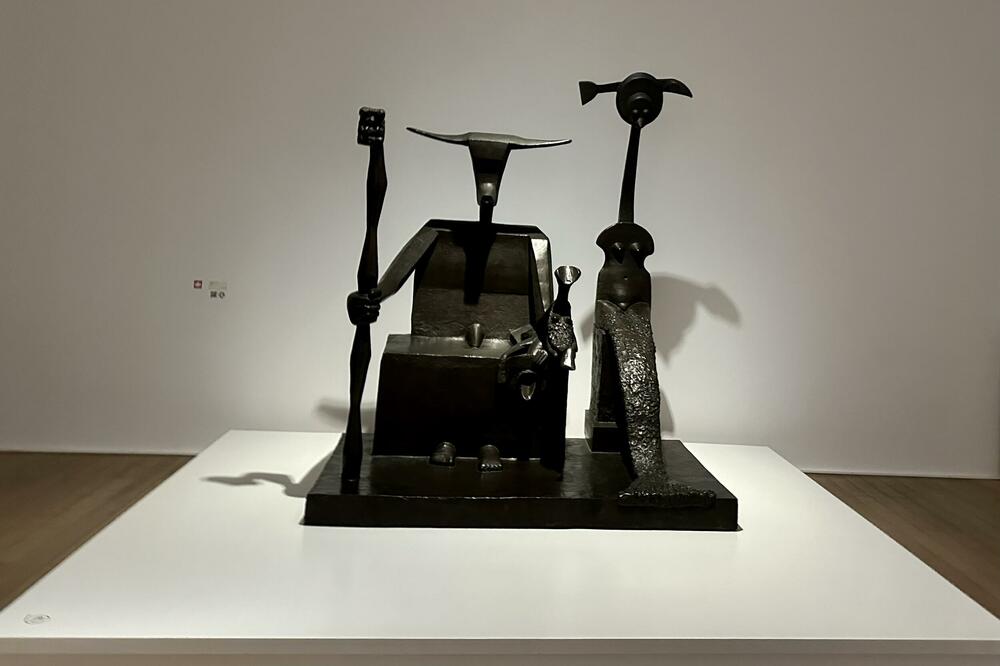On the train to Brill, I read the biography of the painter whose work I am visiting. Although he is an innovative avant-garde artist, I discover a deep trace of the German artistic tradition even in his childhood. The story goes like this: Wolfgang Müller von Königswinter - a doctor and poet from the 19th century, wrote the poem "Monk from Heisterbach". In the song, a young devotee of God got so deep in thought that he got lost in the forest. When he came out of it he realized that 300 years had passed. Thus he realizes that the Creator is beyond time. This poem motivated the teacher of deaf and mute children and self-taught painter Philippe Ernst of Brill to create perhaps the best painting of his life, which he called "The Monk of Heisterbach (Loneliness)".
In this story, it is significant that the third of Philip Ernst's nine children stood in front of that picture with wonder and admiration - little Max. Von Keningswinter's verses, transformed into a picture made by the boy's father, won the young soul. That boy would later become one of the most important German painters of the 20th century, Max Ernst.
Finally the Museum
I often stayed in the painter's hometown of Brill, halfway between Cologne and Bonn. Visited Christmas fairs with his son, walked from one of the most important baroque castles in the country - Augustinusburg - to the hunting summer house of a nobleman. Varoš had charm and world cultural heritage, nice cafes and beer gardens. Not once did I get to visit the Max Ernst Museum, although I loved that entire generation, the Dadaists, Expressionists and Surrealists, the young European avant-garde that survived the slaughter of the First World War.
Getting off the train in Brill, this time I headed straight to the Museum. Not even a ten-minute walk from the train station, the old double-winged two-story building with a modern glazed entrance promises the energy of true art on a gray, rainy day.
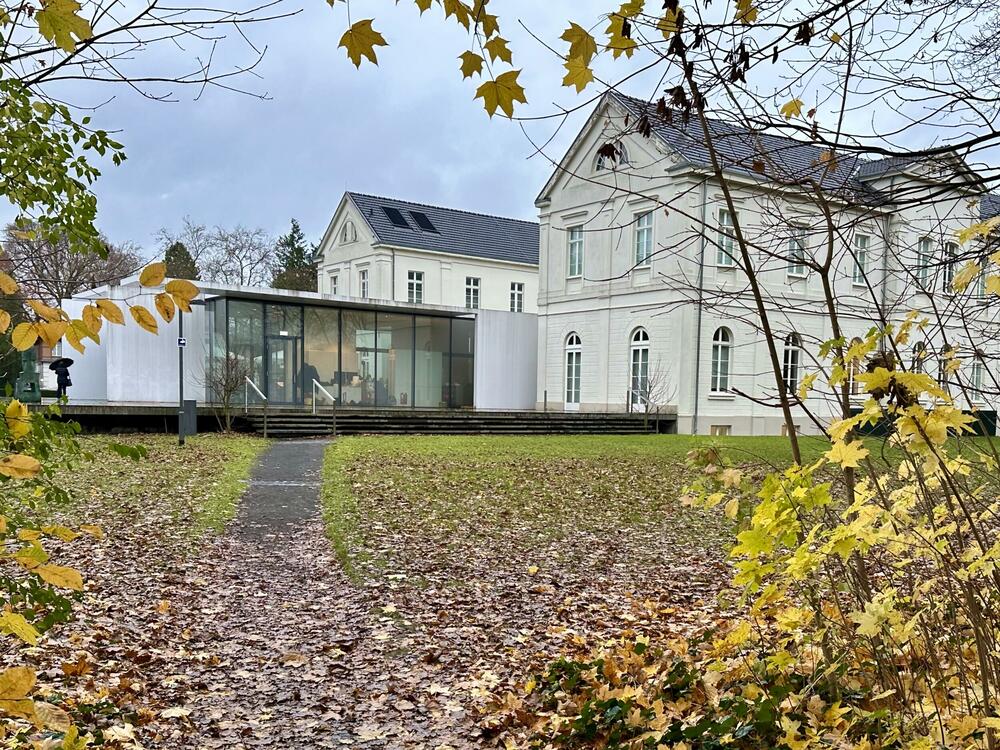
The entrance fee is 11 euros. On the basement level, there is an exhibition of digital works by contemporary artists. The museum administration adheres to the experimental spirit of the artist to which the institution is dedicated, so in addition to the permanent exhibition of Max Ernst's works, it also provides space for new names. I don't linger too long in the foyer. I walk through the big door into the world of Max Ernst.
Already in the first chamber there is perhaps the most significant sculpture created by Max Ernst - Capricorn. It got its name from the Latin name for goat - capricornus. Max Ernst first created a male and female sculpture from various materials - for the slender female neck, for example, he used a fender from a car. He then poured everything in cement in front of his house in Arizona. When he moved to Europe, he took a plaster mold of the sculpture. That's how bronze prints were created in Europe - one of them is in front of me, in the Museum. This work summarizes almost all of the artist's fascinations - the surrealistic obsession with the mythical Minotaur, the art philosophy of the American indigenous culture, the peculiarity of chess pieces.
"The painter is lost, if found"
I head further, through the beautifully decorated corridors, and I'm already in front of the artist's self-portrait from 1909. The picture is an inevitable illustration of every representation of this painter's creativity. I calculate: Max Ernst was 18 years old when he painted this self-portrait. There is also youthful determination and some thoughtfulness. There is the discerning eye of the painter. Some melancholy.
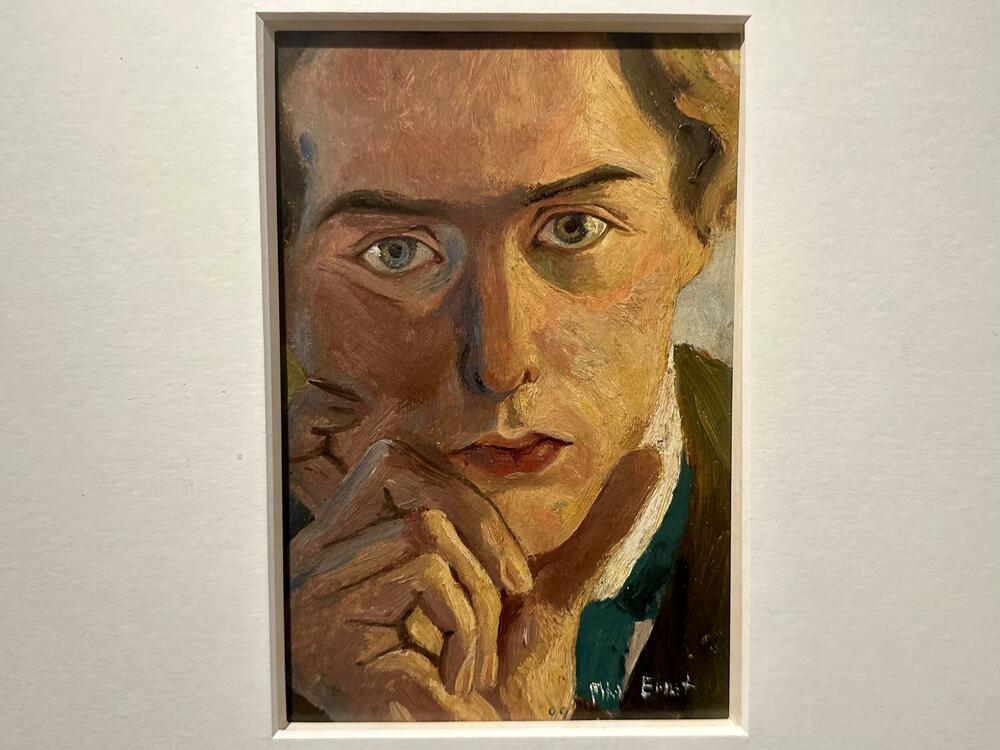
His father, who was prevented by his parents from devoting himself to painting, allowed his son that freedom. Earning extra as a portrait painter, Philip Ernst sent six of his nine children to study.
On the walls of the Museum are quotes from Max Ernst's diary. The first of them could be the motto of his life: "A painter can know what he will not do." But woe to him if he wants to find out what he wants! The painter is lost, if found. The fact that he was lucky enough not to find himself is considered by Max Ernst as his 'only' merit". Whoever talks about himself like this in the third person knows very well what he is talking about.
I pause a little longer in front of one canvas. I recognize the terrace of the castle in Bril, the painting is called "Loni on the terrace of the castle" and was created in 1932.
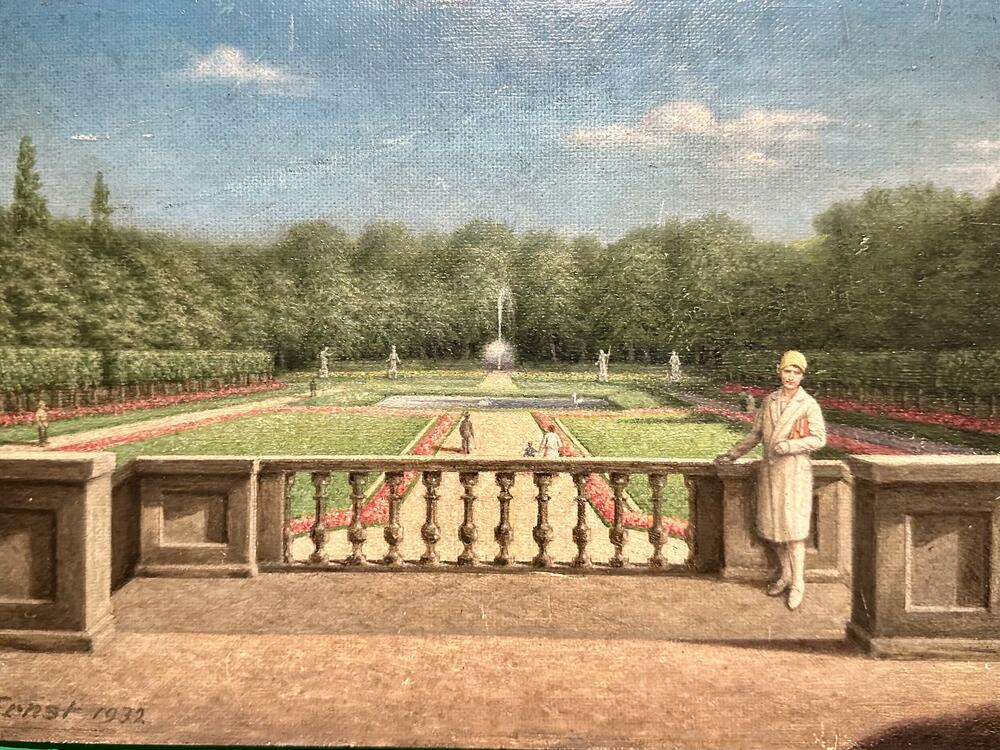
Loni was Max's younger sister. Between the self-portrait from 1909 and this painting, an era broke, as well as the artist's life. The First World War left an indelible mark on his generation, today we would rather say - trauma.
Wizard Max is looking for his myth
"Max Ernst died on August 1, 1914. He came back to life on November 11, 1918 as a young man who hoped to become a wizard, to find the myths of his time". This thought of the artist shows the disgust he felt towards the war, in which he was given officer's ranks against his will, but also hints at the search for mythical images of modernity.
And indeed, in his second life, Max Ernst became a radical Dadaist, who made friends with representatives of the rebellious avant-garde, the late world artistic elite. His provocative behavior will cause the anger of the public and authorities in Cologne, but also a break with his father. Hans Arp, who will remain his friend for the rest of his life, will be in the group that provokes the advocates of the small-town artistic convention. In that period, he met the main figures of the surrealist movement, such as Paul Eliard, Guillaume Apollinaire and Andre Breton. In 1922 he went to Paris.
The French writer Paul Eliard and his wife Gala will be his hosts. Max Ernst engages in a love triangle, in which both he and Eliar end up without Gala. She marries surrealist eccentric Salvador Dali. The tumultuous years in Paris are hinted at in the display cases where the original catalogs for the artist's first exhibitions are kept.
Hallucinatory abilities of the spirit
Frotage - rubbing - the ancient Chinese technique of "blurring" drawings was a real discovery for Max Ernst. In 1925, the painter observed the old wooden pathos in a small guesthouse on the Atlantic coast of France. He put paper on it and painted the structure of the floor with soft graphite. This is how his first work of this kind was created. He later perfected the procedure. Since 1927, the artist has transferred the technique, most often applied to drawings, to painting with oil paints. This is how the scratching technique - gratage - is born. "Frotage is nothing but a technical means of raising the hallucinatory abilities of the mind." Perhaps this statement best demonstrates Max Ernst's innovation, his ability to see and shape the world differently.
I go up to the exhibition rooms on the first floor, where the artist's exciting works from the American period await me.
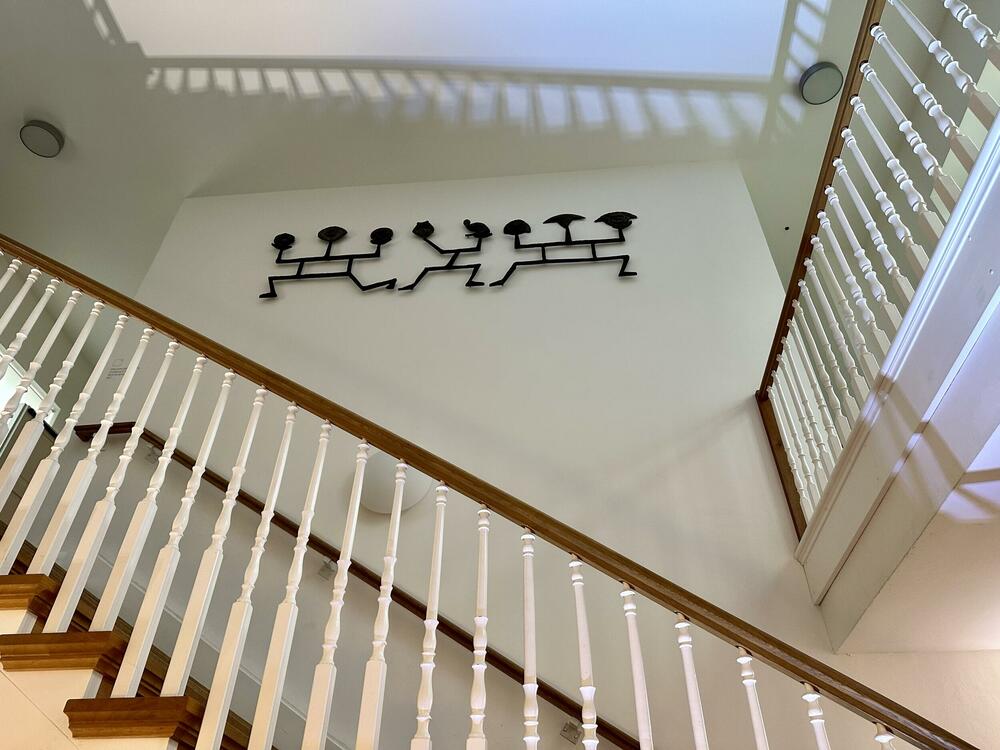
Max Ernst wrote that one of the key events in his childhood was the death of a bird. Many of his figures show an abiding fascination with the bird world. Ernst's sculptures were a pleasant surprise for me.
The king is playing
The combination of chess figures, bird-like figures, masks, leave a strong impression. "King Plays Queen" is a plastic created in 1944 on Long Island, in a garage.
I recognize in his works the same avant-garde spirit that adorned some figures of Bogdan Bogdanović. Leskovac's "Forest Goddess" is a relative of figures from the world of Max Ernst.
"When I reach a dead end with painting, then I am left with sculpture as a way out... In sculpture, both hands have their role, as in love," wrote the artist.
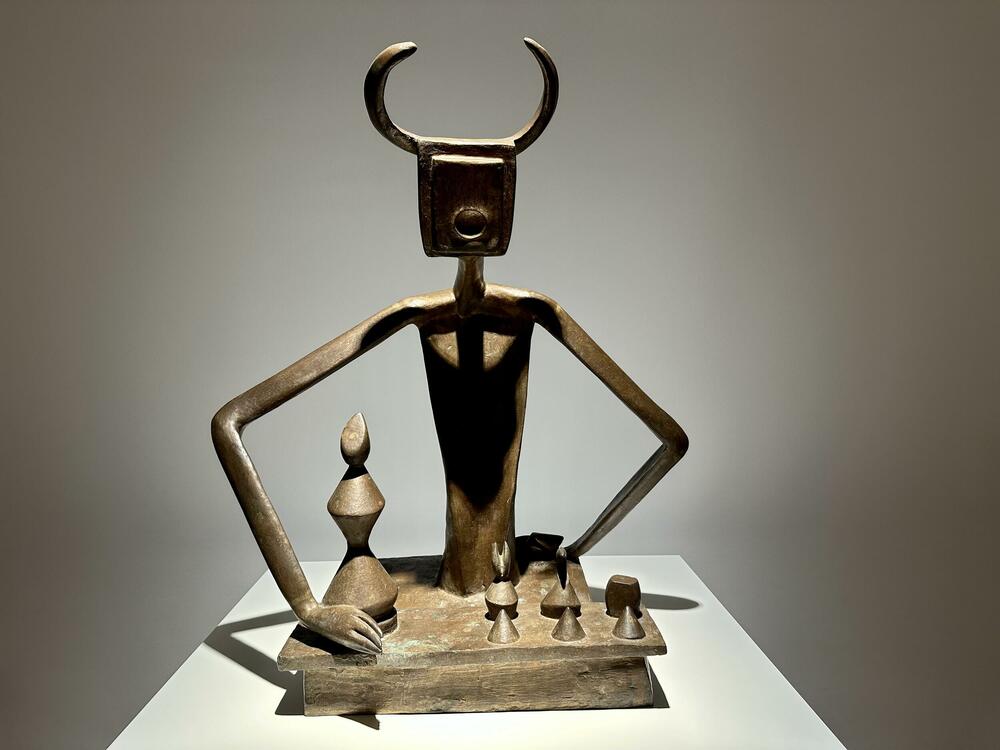
Love was clearly Max's elixir of life. Towards the end of the First World War, in October 1918, he married Louise Strauss, the daughter of a Jewish manufacturer from Cologne, who studied art history with him. They divorced in 1926. At the beginning of World War II, Max managed to escape from the Nazis, his ex-wife, remaining in Germany, suffered the fate of millions of Jews - she was killed in Auschwitz in 1944.
The wedding with the much younger eccentric artist Marie-Bert Orange in France took place in 1927. This marriage full of bohemian association with surrealists lasted until 1936. Max Ernst asked for a divorce. From next year, he will live with the surrealist artist Leonora Carrington, who, after Max Ernst was arrested in occupied France, flees to Spain. But the next woman entered the artist's life, the rich American Peggy Guggenheim, with whom he managed to reach the United States of America in 1941 via Spain and Portugal. In New York, the couple gets married, but Max Ernst meets Dorothea Tenning at an exhibition at the end of 1942 and divorces Peggy because of this American painter.
Immortalized Dorothea
Dorothea is 32 years old and Max is 51. However, this relationship will last until Max's death. They first found home in Arizona, in the small town of Sedona, where Max Ernst discovered the culture of the Hopi Indian people. The name of that people in translation means - peaceful. The pacifist Max Ernst must have felt a spiritual affinity with Native American culture.
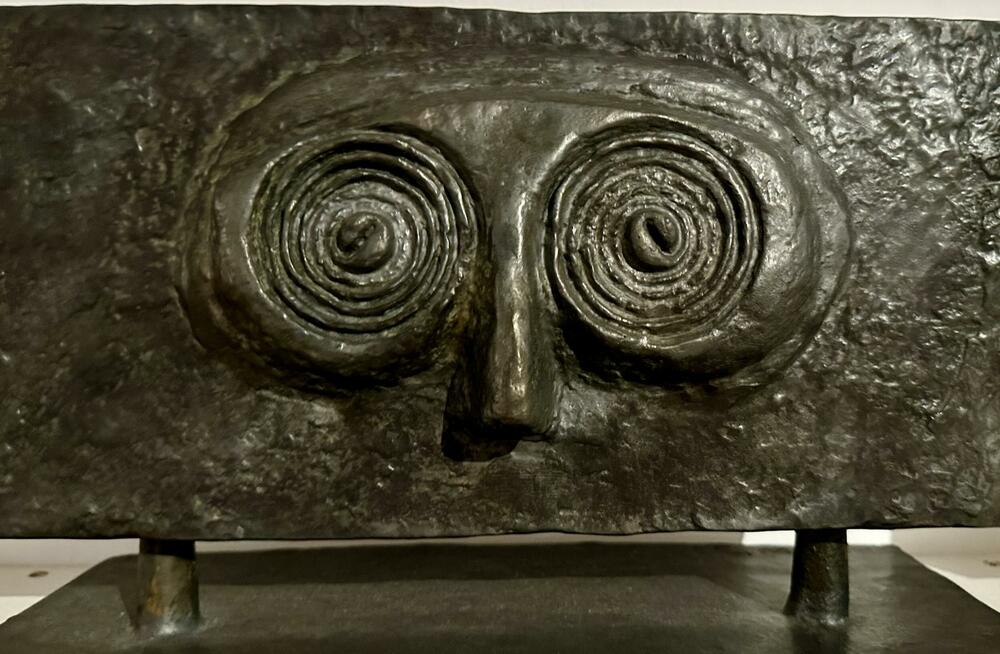
Since 1953, the couple has been living in France again. It seems that Max was aware that he had found the right companion in Dorothea. In the Museum in Brill, a special wall is dedicated to the series that the artist called "D-Paintings". The works are dedicated to Dorothea. Actually, they are birthday presents, one for each year together. Each picture has a D inscribed on it. Max Ernst paints scenes of love - they are like a dream, often with a night atmosphere, full of aurora borealis or moonlight. "Multicolored lightning bolts symbolize the surrealist spark of poetry, but also the magical spell of love," is written in the explanation of the cycle in room VII of the Museum.
It was these pictures that left the strongest impression on me.
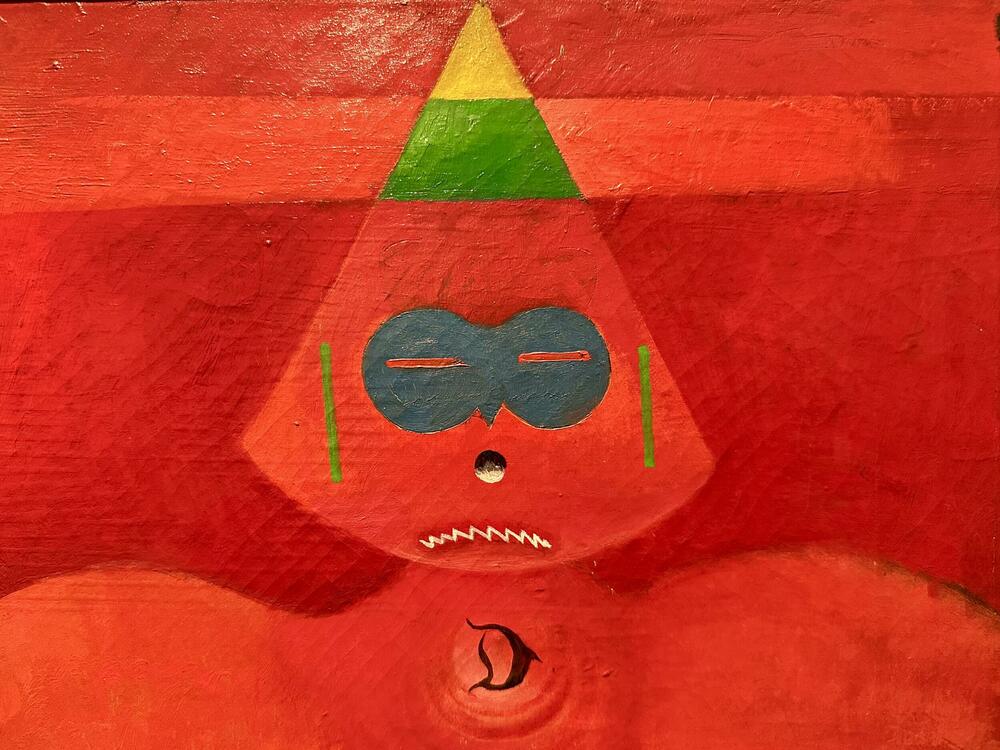
Max Ernst was a poet of eros, such works were his best. Some of the picture names consist only of the letter D combined with the year of creation. However, some titles reveal more: "Song for D", "Three flowers for Dorothea", "Phases of the night".
Hallucinogenic eros
Max Ernst died in 1986 in Paris and was buried at the famous Père Lachaise cemetery. His Dorothea moved to New York. She outlived him by three decades. And both she and him have been outlived by images that celebrate the hallucinatory nature of their love.

I am arranging impressions in the museum cafe "Mali Maks". That name reminds me of the fact that Max's father painted his barely five-year-old son as Jesus. There is hardly any room in the cafe. The sad chairs in the garden get wet. Murmurs inside, human conversations. This Sunday is special for Germans - the evangelical church celebrates the "Sunday of Eternity", which the people call "Sunday of the Dead".
School of Assassins
I remember the capricious history playing bitter jokes with Max Ernst. Although France was his second homeland, when the Second World War broke out in 1939, the French authorities imprisoned him in a camp as an "enemy German". He was released from there at the insistence of the French poet Paul Eliard. But the following year he was arrested by the German occupiers of France. The Gestapo knows very well that the works of Max Ernst were also exhibited at the famous Munich exhibition of "degenerate art". And at that exhibition, in the Nazi interpretation of aesthetics, a kind of artistic enemies of the Third Reich were represented. Max manages to escape. When he arrived in the USA he had to spend some time as a prisoner in the fort on Ellis Island. And there he was first labeled as an "enemy foreigner". This time he was released after three days.
Today, the leading museums of three countries are stealing his heritage, and then the authorities of those countries arrested him.
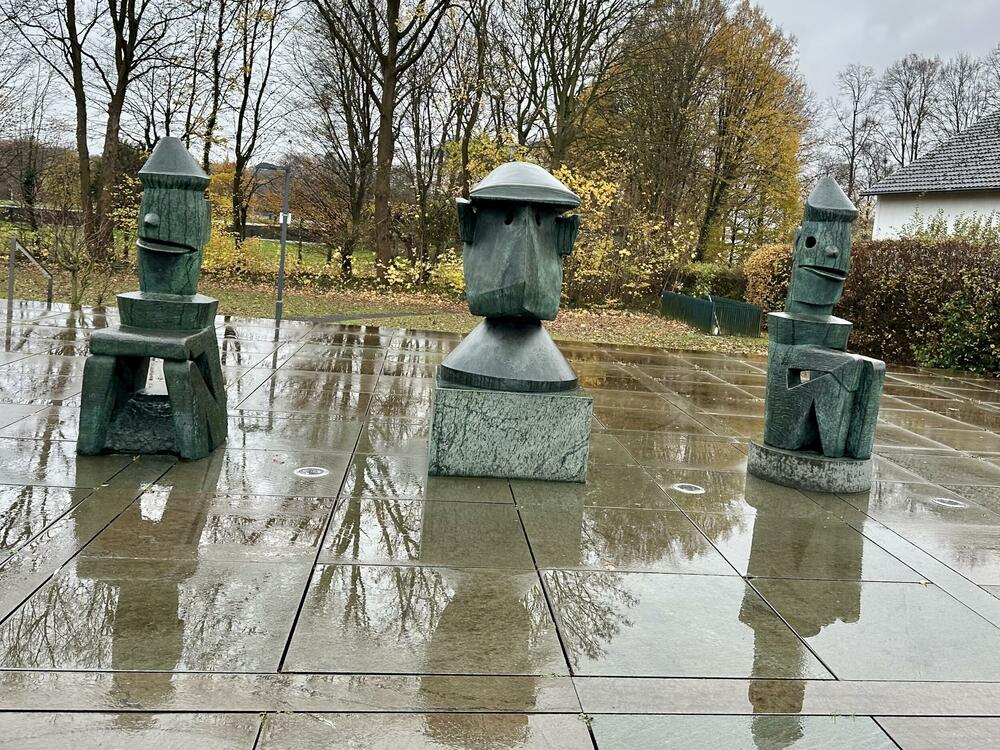
I remember that when entering the Museum, on the plateau in front of the building, I saw three sculptures that were reflected on the wet concrete. The work was created in 1967. The name is youthfully provocative, and the artist was 76 years old when he created these figures: "Teaching College of the School for Murderers". The artist probably referred to Orwell, when he named the central figure "Big Brother", and gave biblical, angelic names to the figures next to him. During their lifetime, this trio was a personal guard in front of Max Ernst's home. Now members of the bizarre collegium stand guard in front of his museum.
Darkness is already slowly falling. I wouldn't have liked to have spent this Sunday anywhere else. Hanging out with the dead artist, I realized that his aesthetic search here in Brill left a living, tenacious trace, ideal for brightening the gloomy November days.
Bonus video:



